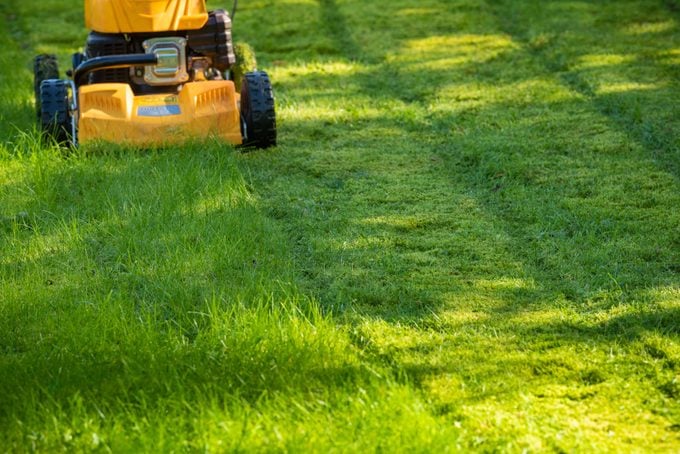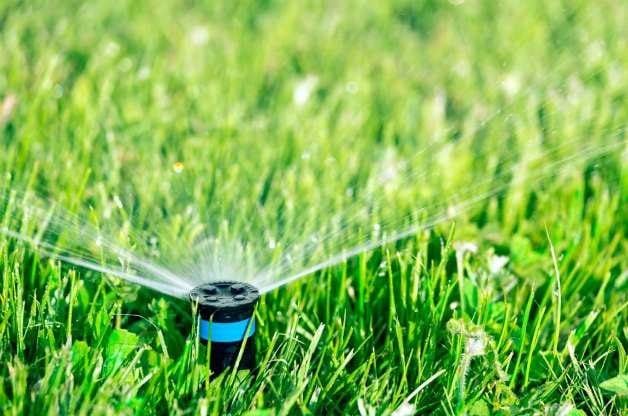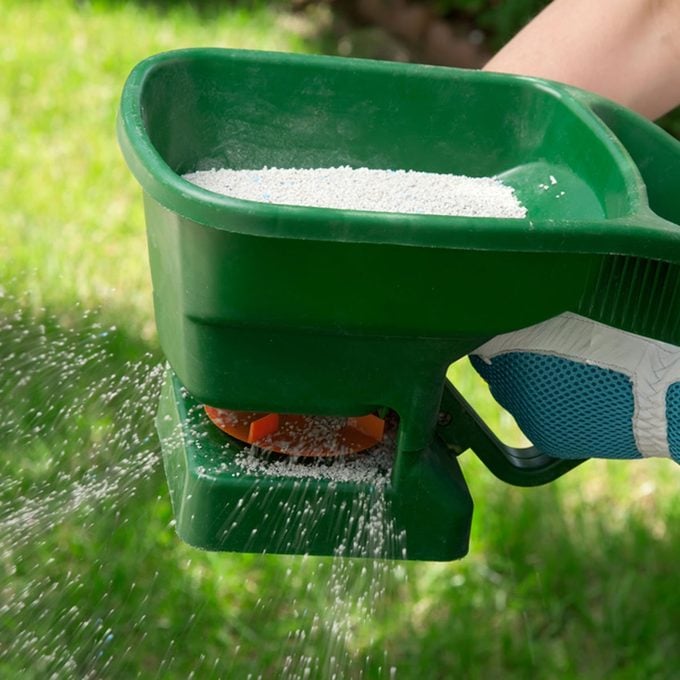7 Tips for Growing a Healthy Lawn
Updated: Nov. 08, 2022
Follow these simple tips for growing a healthy lawn that may leave your neighbors green with envy. Learn how to water, fertilize, mulch and more.

What you mow begins with what you know. That’s why we turned to a few experts—a university turf specialist, a baseball field grounds manager and a home owner with an award-winning plot—to learn their secrets of growing a healthy lawn. Each had their own favorite tip for terrific turf, but their advice was surprisingly similar. After listening to their wisdom, we realized there is no magic to growing a healthy lawn. Instead, there are a few lawn care basics, listed here in five steps, that can help anyone achieve a healthy lawn that’s lush and green.
Learn about these 19 things your landscaper won’t tell you.
Get the Cutting Height Right
It seems like a simple chore, but there’s more to mowing than firing up the lawn mower (or asking your teenager to get at it…again). One of the fundamentals to a healthy lawn is setting your mower to cut at the right height.
Most lawn grasses perform best at a length of 2 to 3 inches. Get out a ruler and you’ll see how long that really is. It’s more like a shag carpet rather than a golf green. Adjust your lawn mower so you’re never cutting below the recommended height. This is important because the grass uses the extra length to absorb the sunshine it needs to grow and develop.
“If you remove too much, the grass has to use its energy reserves in order to regrow,” says Zac Reicher, Extension turfgrass specialist at Purdue University in West Lafayette, Indiana. “Mow too short, and you’ve just created a plant that takes a lot of effort to maintain.”
Check out 30 common lawn weeds and how to ID them (plus free downloadable chart).
Keep Grass Longer in Summer
The hotter the weather, the taller your grass should be. Longer blades shade the plant’s crown and provide more energy to deal with the stress caused by heat.
“I always cut at the correct height and let it grow a little taller in summer,” says Marc Rosenthal of Boonsboro, Maryland, who along with his wife, Tracie, won the 2001 Lowe’s/Briggs & Stratton All-American Lawn Contest.
Another guideline is the so-called one-third rule, meaning you should never cut off more than one-third of the grass height in a single mowing. “Mowing is also a stress, but the less you remove each time, the less stress you’re putting on the grass,” Zac says.
This may mean you have to mow more frequently, even twice a week when the grass is actively growing in spring. Just think of it as part of your exercise routine.
One other note: Leave the clippings on the lawn after you mow. This saves the time and energy of bagging, and the clippings decompose and add vital nutrients to the soil.
We found 12 ways to win the war on weeds.
Use a Sharp Mower Blade
Now that you know how to mow, it’s time to do a quick check of your equipment.
Although the type of mower you use isn’t important, the condition of the blade is. A dull blade tears the grass instead of giving it a clean cut, and tearing is just as damaging as it sounds.
One of the quickest ways to improve the look of your lawn is to sharpen the mower blade.
“I recommend sharpening once a month,” says David Mellor, director of grounds at Boston’s Fenway Park. “The grass dries out more quickly if the blades aren’t sharp.”
You’ll know your blade needs sharpening if the grass tops are frayed after mowing—just pluck a blade to take a close look at it. As those tiny ends dry out, they give the lawn a brownish cast and make it more difficult for the grass to fight off pests and disease.
Learn what grass grows in shade and how to grow it.

Don’t Overwater the Grass
It may seem illogical, but overwatering your lawn causes more damage than a lack of water. That’s because most turf grasses are equipped to survive dry spells, but not floods.
“If you’re questioning whether to water or not, don’t,” Zac advises. “We kill more grass with too much water than with too little.”
Most turf grasses require 1 to 1-1/2 inches of water per week (from you or Mother Nature). This should be enough to moisten 4 to 6 inches below the surface for clay soils and 8 to 10 inches for sandy ones.
Sticking a screwdriver into the ground after a watering or a good rain is one way to test if the lawn is getting enough moisture, David says. It should go in easily up to the appropriate depth listed for your type of soil.
It’s best to avoid setting a strict watering schedule because what a healthy lawn needs varies due to weather, time of year and type of grass or soil, Zac says. Instead, watch for early signs that the grass needs water. It may take on a bluish-green hue, or you’ll notice that your footprints remain in the turf after you walk across it.
Learn 7 ways to conserve water in the garden.
Allow a Healthy Lawn to Go Dormant
Due to drought or watering restrictions, it’s not always possible to maintain a green lawn all summer. This is when it’s comforting to remember that turf grass is resilient. It may not look pretty, but it won’t harm grass to become dormant during the hottest and driest parts of summer. As the grass blades brown, the plants are conserving energy to keep their roots and crowns alive, Zac says.
Most grasses can withstand a dormant period of 4 to 6 weeks. Any longer and you should give it a good soaking, then wait another 4 to 6 weeks if necessary before watering again.
Don’t worry, once the moisture returns, you’ll be surprised how quickly your healthy lawn springs back.
When is the best time to water plants?
Fertilize Your Lawn Properly
Just as overeating isn’t healthy for people, giving your lawn too much food isn’t a good idea either.
“Don’t think that if a little fertilizer is good, a lot is better,” David says. “Too much can actually cause more problems for your lawn.”
Even home owners like Marc and Tracie, who have an enviable carpet of green grass, don’t go overboard with the fertilizer. Marc says he adheres to the recommended four fertilizer applications a year—spring, summer, early fall and after first frost. He admits to even skipping the mid-summer treatment on occasion.
“I first picked up the idea of a schedule while playing golf,” Marc shares. “I noticed that the groundskeepers only fertilized at certain times of the year.”
Although the return of spring weather gets many folks excited to start greening and growing their lawns with fertilizer, fall is a better time for this.
In fact, if you only want to fertilize once a year, do it in fall for the biggest impact, Zac says. And definitely avoid fertilizing in summer if your grass is dormant. The plants won’t be able to use it, so it’s just money down the storm drain.
Since we’re on the subject of maintenance, here’s why fallen leaves make great mulch for your lawn.
Prevent Lawn Problems Before They Start
Follow the previous four steps and you’re already on your way to growing a healthy lawn. Marc says regular maintenance is what helped him and Tracie earn the All-American Lawn award.
It’s much easier to prevent problems than to correct them,” he says. “Consistent maintenance is the key. We aren’t constantly working on the yard, but every 8 weeks or so there’s usually some upkeep to be done, whether it’s weed control or fixing a bare spot.”
Make sure you are prepared with the top 10 essential garden tools.

